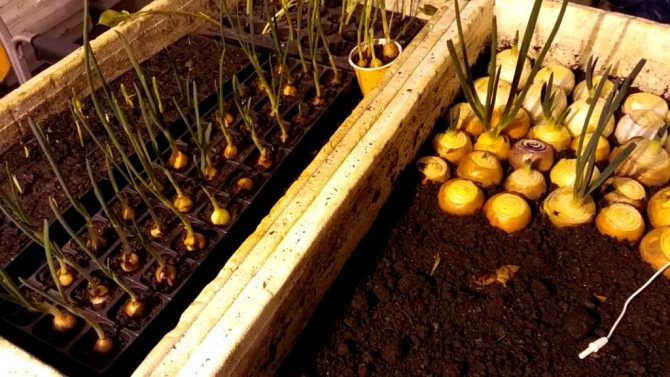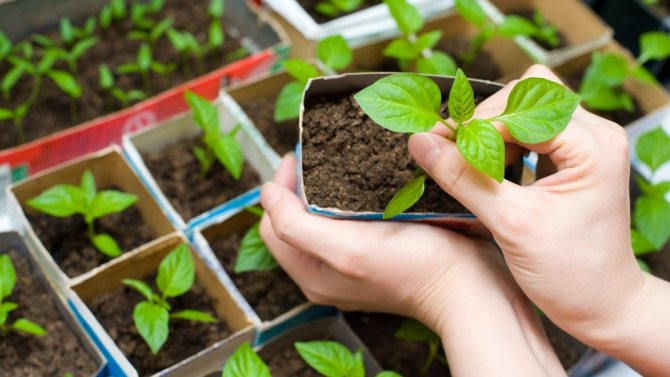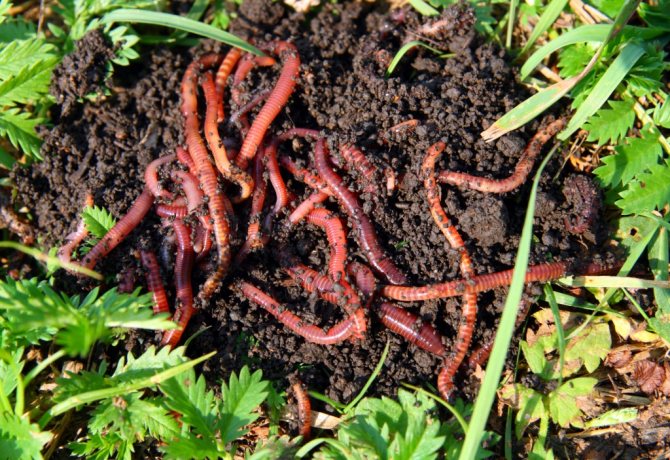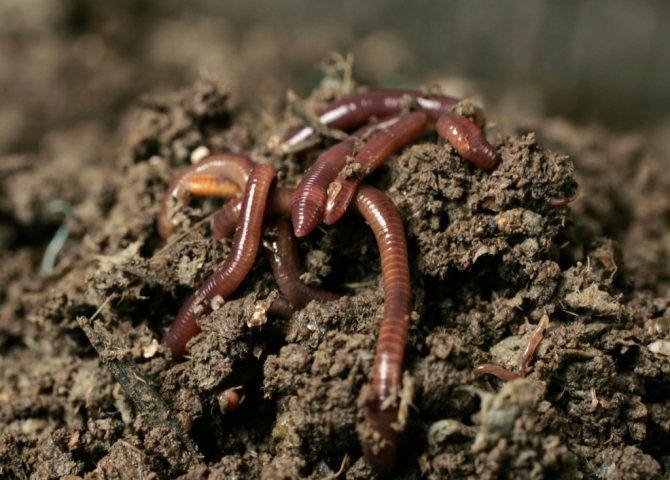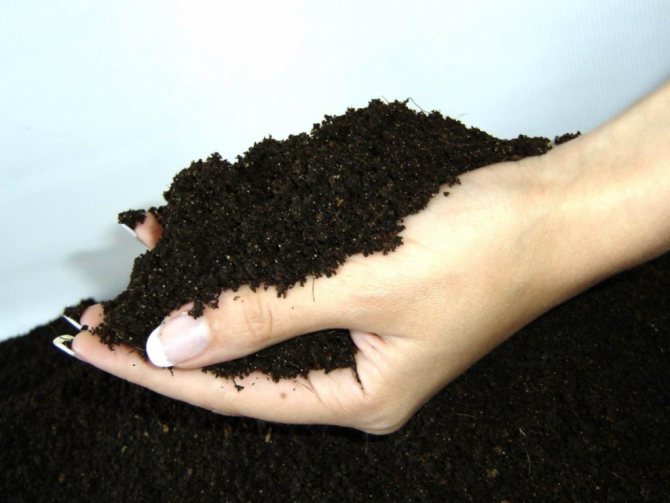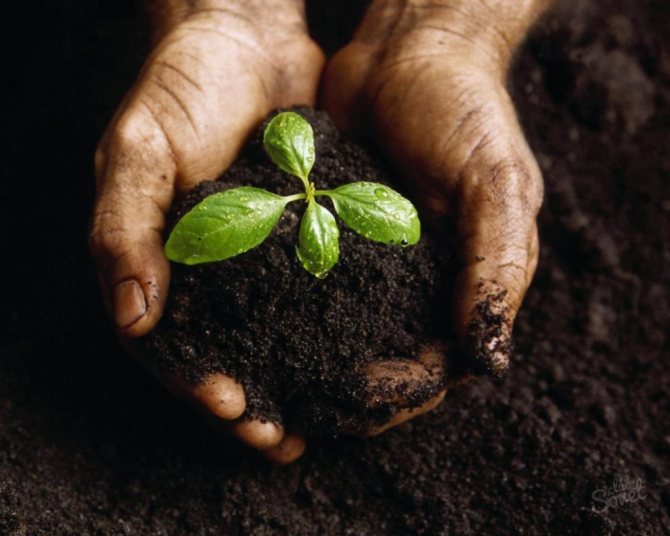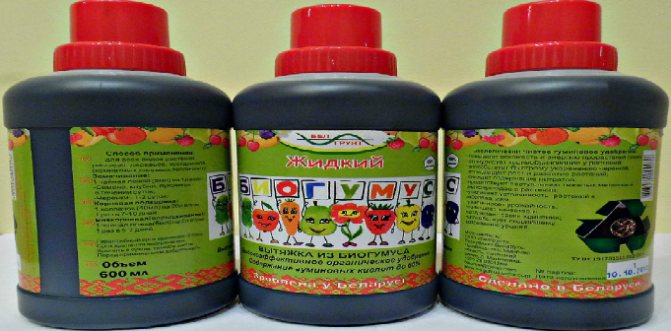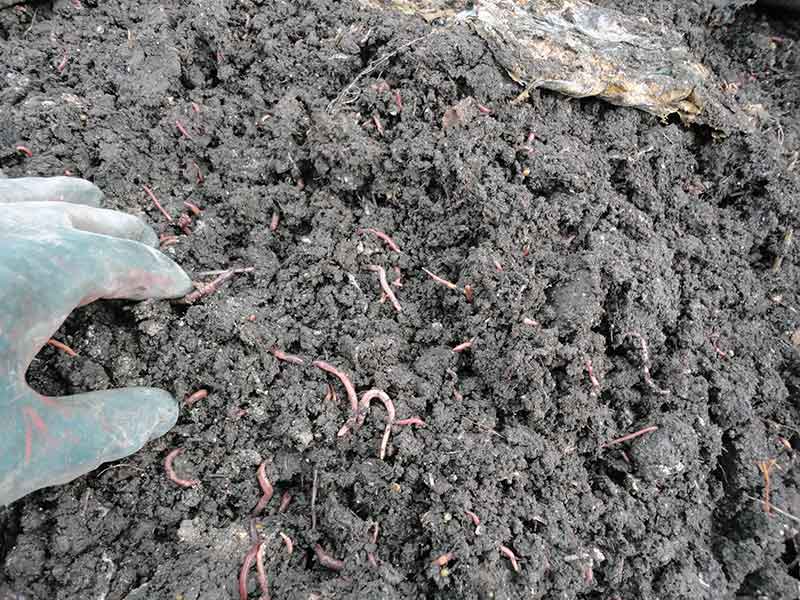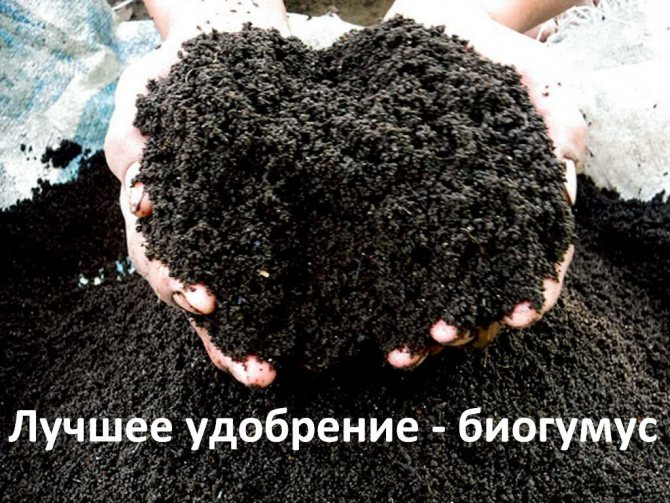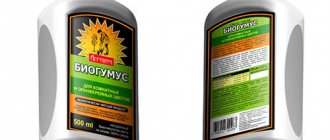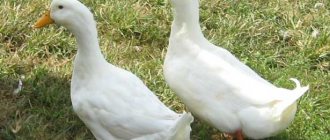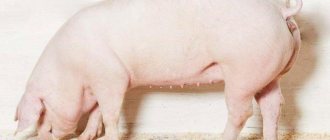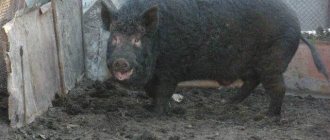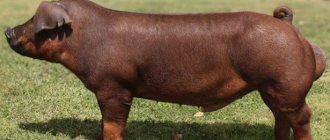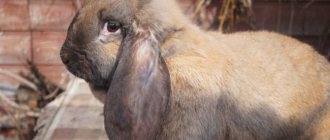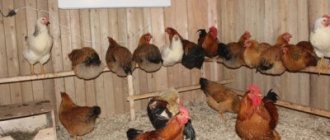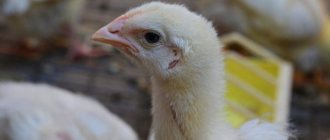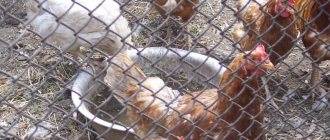- Business: Home business (hobby), Pet business; investments from 10,000 rubles; payback from 8 months; minimum area from 5 m²
- Business area: manufacturing
Breeding worms at home
A couple of decades ago, growing earthworms would have seemed like an exotic business. But time passes, technologies are improving, the need for environmentally friendly fertilizers is growing, and therefore this type of business is already widely represented in many countries of the world. Enterprises of various sizes are engaged in this business.
Warm cultivation is the process of growing worms that must be studied in great detail before you practically embark on a business project. It is also necessary to understand how worms reproduce in nature, but the main condition for the successful establishment of such a business is the presence of a constant source of organic waste.
Features of the existence of a manure or compost worm
Exploring this amazing living pharmacy bodes well for the future! Of the wide variety of earthworms (more than 6000 species) that live in soil around the world, so far only one (!) Species is widely used for composting manure and other organic waste. This is a dung or compost worm - Risenia foetida. It was he who was introduced into vermiculture in many countries for the production of vermicompost.
It is a relatively small worm (6-10 cm), dark red or red-brown in color. The translation of its Latin specific name means "smelly", since when disturbed, they emit droplets of a bright yellow liquid with a pungent odor from the tail end. "Stinker" has high fertility, is hardy to changing environmental conditions, is very widespread. It lives most often in rotted manure, in compost pits.
Two subspecies of this worm are described:
- stripless - in the north of the Mediterranean;
- striped in the north of Europe and in Russia.
Their local populations - local aggregations - also differ greatly in the rate of growth, reproduction, i.e. by productivity, which is associated with genetic differences.
The first of these was used to breed "commercial" crops. Cultivated under the name "red Californian hybrid". It was brought to Russia through Ivanovo-Frankovsk from Poland and Hungary.
At Moscow University, new industrial lines are being selected on the basis of a genetic collection from different populations of worms. On the basis of genetic methods, their genetics, the properties of the resulting vermicompost are studied.
How do they reproduce? All worms, including earthworms, are hermaphrodites, i.e. each individual has male and female reproductive systems. After the mutual exchange of semen, each of the pair in the front of the body in a few days forms a "belt" - a mucous thickening 4-5 segments wide with a large supply of nutrients. When it is dropped through the head end of the body, eggs and semen enter the girdle, and fertilization occurs. In the external environment, a "belt" with several fertilized eggs is formed into a capsule with a dense shell, the so-called cocoon with embryos, similar to buckwheat grain. Embryos develop there, and then a worm 1-5 cm long hatches.
A mature worm produces 1-4 cocoons weekly under optimal conditions. And from each cocoon after about three weeks, from 2 to 10 larvae hatch (about four survive). After three months, the hatched worms become sexually mature. On average, one individual gives offspring - 300-400 individuals per year. The life span of compost (manure) worms, according to various sources, ranges from 3 to 15 years.
The body of the worm is divided into segments that bear 4 pairs of setae. They are used for locomotion. Thanks to the contractions of the annular and longitudinal muscles, the worms "ram" the soil in search of better living conditions. Where the soil is very dense, they simply eat up their passages.
Worms breathe with the entire surface of the body, which is constantly covered with mucus. When the mucus dries, the individual dies.
Worms are very susceptible to the slightest vibrations of the soil and find food very well by smell. They eat at night. Their menu includes semi-decomposed organic remains of plants and animals found in the soil and on its surface. Cow dung serves as a good food for them. In forest-covered soils, worms feed on leaf litter. They can also eat fresh leaves of cabbage, onions, horseradish, carrots.
Earthworms prefer moist and well-aerated soils. They do not tolerate drought and frost and are very sensitive to soil acidity. Acidic soils contain little calcium, which is necessary for their normal functioning. In soils where the pH is below 4.5, worms do not live. They are most active in spring and autumn, when the soils are warm and have sufficient moisture.
Documents and permits for business registration
If you are planning a large-scale production of biohumus fertilizer, which will not be limited to your own garage or summer cottage, the business will have to be registered. RBoth organizational and legal forms are allowed - IP and LLC. The final choice rests with the business owner. A small enterprise with one founder is planned - an individual entrepreneur is enough. Several people are planning to invest in the business and in the future it is planned to expand - it is better to stay with an LLC.
Such a business does not require special permits or licenses to operate. However, if among the potential buyers there are wholesale customers, for example, large farms, it will become necessary product quality certificate. The entrepreneur must arrange it himself by submitting an application to the state center for certification and standardization. Sometimes private companies offer certificates, but there is much less confidence in them among potential clients.
OKVED and taxation system
During registration with the Federal Tax Service, the entrepreneur indicates the code of economic activity (one or more). For the production of vermicompost is used OKVED 24.14 - Production of fertilizers and nitrogen compounds - where animal fertilizers and their mixtures are included.
The optimal options for calculating and paying taxes will be simplified mode... Unfortunately, fertilizer producers cannot use the preferential simplification option - the unified agricultural tax. Despite the fact that vermicompost is used exclusively in agriculture, it itself is not considered an agricultural product, therefore it is not entitled to benefits. Therefore, when registering, submit to the tax service a notification of the transition to the simplified tax system in the form of 1150001. This must be done in the first 30 days after the issuance of the certificate of individual entrepreneur or LLC.
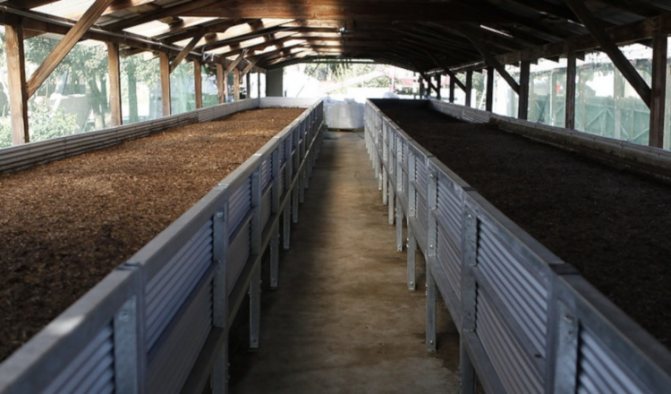
A warm dark room is suitable for the production of vermicompost.
How a compost (dung) worm produces vermicompost
Aristotle called earthworms the intestines of the whole earth. The ancient Chinese called them the angels of the soil. How do worms produce vermicompost? What's going on? The fact is that, passing through the digestive tract of the worm, organic waste undergoes not only physical, but also chemical transformations.They are crushed, grinding with grains of sand, like in the goiter of a bird. Calcified by the secret of a special gland, processed by digestive juices, enzymes. They mix with metabolic products coming from the excretory organs of the worms themselves and the special microflora of their intestines (uric acid, urea, etc.). Many complex compounds are decomposed to simpler mineral substances, converted into a form accessible to the plant.
And in the intestines of worms, fiber decomposition occurs, partial mineralization of plant tissues, the concentration of biogenic elements (including such as potassium, phosphorus, magnesium, calcium) increases. The organic and inorganic acids contained in the processed substrate are neutralized. At the exit, hygroscopic granules - caprolites - are obtained.
Their mass can reach several hundred tons per hectare. In their composition, they differ from the chemical composition of the soil. In addition to calcium, they contain large amounts of nitrogen compounds and other minerals in a form available to plants. Therefore, caprolites are an excellent additive to soil for growing plants. Thanks to their presence, the soil acquires a good structure, its water-holding capacity increases, and its air regime improves. In addition, caprolites are an excellent substrate for soil microorganisms, increasing their number many times over.
This is how vermicompost turns out.


The vermicompost obtained after processing by drying and sifting, thanks to the abundance of nutrients, enzymes, growth accelerators, beneficial microflora, and other valuable properties, is a good environmentally friendly fertilizer. In addition, vermicompost contains biologically active substances that increase the resistance of plants to diseases and pests. Thempostny (dung) worms themselves do not get sick (!) And do not transmit diseases to other various animals for which they serve as food. With a great crowding in such an aggressive pathogenic environment of their habitat, this is possible only thanks to the powerful defense system developed by earthworms in the process of evolution.
Sales of products
The interest in biohumus is wide among several categories of buyers:
- agricultural enterprises;
- farms;
- amateur gardeners.
These categories buy vermicompost as a fertilizer, their task is to increase productivity. Another category of buyers is fishing farms, shops and fishermen. They buy not vermicompost, but the worms themselves - as feed or bait. Thus, it will be possible to get rid of unnecessary individuals and receive additional income.
How to breed worms in a compost heap
The first farms for artificial breeding of worms on waste for the production of vermicompost were created in the late 40s of the last century in the United States. Vermiculture (worms) are kept in sheds, greenhouses, basements. Placed either on ridges, or on racks, in containers, boxes, trays, pallets. Optimum temperature - + 20 ° С, humidity - 75%. To preserve worms in winter, it is necessary to ensure that they are kept at temperatures above 0 ° C.
As one of the possible options for keeping compost worms in the garden to obtain vermicompost is the use of old barrels of 200 liters.
The bottom of the barrel is cut down, three windows 10 × 15 cm are made at the bottom at the bottom at an equal distance to create an air flow through the processed substrate, as well as to sample the finished vermicompost. Rotted manure is placed on the bottom of the barrel (as options - peat, decaying foliage or grass, earth from cesspools), moistened abundantly with warm water, a sample of 10-15 earthworms is placed on the surface of the substrate - their behavior is monitored. If the worms quickly deepen, then this means that the substrate is quite suitable for habitation, you can transfer the main batch.
Where to get the worms? Crawling earthworms, of which a lot appear on the asphalt or on the surface of the earth after rain, are plowed or meadow individuals. They cannot be used for processing manure or compost - they will not survive there. For composting or obtaining vermicompost, dung worms are taken, which can be collected on the waste of existing or abandoned farms.
But you should know that the “wild” populations of the compost worm, with all their diversity, are usually unproductive. Therefore, if funds allow, it is better to buy a small batch of worms in specialized vermicelliaries.
Two breeds of worms are used in vermicomposting to obtain vermicompost: Eisenia foetida
or
Lumbricus rubellas
.
The compost worm eats as much feed per day as it weighs. With an initial stocking density of 1000 specimens per barrel, up to 500 g of vermicompost is formed daily at first.
Organization of the vermicompost
There is no doubt that vermicompost is a very valuable fertilizer that does not require serious financial investments. At home, you can get vermicompost with the help of a homemade vermicomposter, which can be made both in the country and in the apartment.
In the case of a private house, you can organize a compost heap or pit, or, if this is not possible, you will have to find a suitable container.
A wooden or plastic box is suitable for this, cardboard boxes about 70-100 cm deep. And also it is worth taking care of some kind of lid for the container so that the worms do not crawl out, but with the obligatory holes for ventilation.
We recommend: Making a briquetting press for pressing sawdust
To the bottom of a box or box you need to lay out the drainage: a layer of gravel or just make a few small holes there. This is necessary so that moisture does not stagnate, otherwise the worms may die. The container is then filled with the ingredients for the nutrient mixture and heated for ten days until it becomes suitable for launching worms. You can test the readiness of the mixture by running 50-100 individuals there and checking in a day - they must all be alive.
Once the compost is ready, you can carefully lay out the remaining worms. Norm for making vermicompost: 700-1500 pieces per 1 square meter. For the first 1-2 months, they will adapt to new conditions, after which they will begin to actively feed and reproduce. New compost must be applied every 10 days for top dressing.
What compost worms eat
What can be added to the compost heap where manure worms live:
- food waste (for example, melon or watermelon peels, roots, stems, leaves, nut kernels, rice, sunflower, onion husks, seeds, skins);
- eggshells (but not egg white), seaweed, or washed shells (oyster shells, but not shrimp);
- old clothes made from natural fibers (old T-shirts, socks, etc.)
- natural yarn, paper twine, cotton thread);
- non-glossy paper products (cardboard boxes, newspapers, magazine inserts, unmarked envelopes, etc.)
- tea leaves, tea bags, coffee grounds;
- plants, grass cuttings, needles, leaves, small branches;
- sawdust, wood shavings, but not coal ash;
- feathers, hair, wool (cats, dogs, etc.);
- missing food, but no mold.
What not to add to the compost heap (this can kill manure worms or ruin your soil:
- fatty meat, fatty soups, various lubricants;
- plastic, plastic-coated paper such as glossy magazines;
- various stickers, even paper, stamps from postal envelopes;
- bread or yeast foods;
- salt, pepper, other spices (or only a very limited amount);
- milk, dairy products;
- cat or dog droppings;
- lemon, lime, orange or other citrus peels, juice (in excess, they can acidify your soil);
- onion and garlic;
- diseased or infected plants
- waste from processed wood products.
Try to acquire your own mini-vermicompost to obtain high-quality vermicompost with the help of compost (manure) worms. We think you won't have to regret it.


What to feed so that there are no odors in your homemade vermicontainer
Sometimes an unpleasant odor appears in the vermocontainer. It often occurs due to improper feeding of pets. You can not often feed them with waste from fish, meat and give them food with a high salt content. Some owners make a big mistake by giving the worms pickled tomatoes and cucumbers. It is better to stick to a fruit and vegetable "diet". From time to time, you can add tea leaves and grounds left over from coffee to the feed. You can also include eggshells, some starchy foods, leaves and fresh grass in the diet.
Why the Prospector is bred
Vermicomposting allows the use of various non-hazardous waste as fertilizer, which will have a positive effect on plant growth, rooting and stress resistance, as well as improve soil properties. But Prospectors have other uses as well, making their breeding a successful business.


Worms are a source of protein feed
As food, worms can be used both in a live state and specially processed by drying or steaming. When biomass of worms is added to feed, their nutritional value increases by almost a quarter.
In addition to being added to feed, worms are processed into a special protein meal containing up to 67% pure protein. The rest are fats -20%, methionine -3% and lysine-8%. This protein flour is one of the most nutritious and effective components for the formulation of food and combined feed.
Fishing Attachment
The hardy and well-fed worm is very popular with most fishermen. Worms can withstand heavy loads - hot and cold weather, while maintaining vitality and attractiveness to fish. An experienced angler always tries to provide himself with baits, regardless of the vagaries of the weather. Worms are a universal bait that is used for fishing in all seasons of the year.
Vermicompost is an excellent fertilizer
Laboratory experiments on the use of vermicompost when growing tomato seedlings showed its high growth-stimulating properties. Thus, the use of vermicompost in doses of 5-7 kg / m2 when growing tomato seedlings led to an increase in germination energy and seed germination by 5-7%; acceleration of the appearance of the first leaf by 5 days and the height of the seedlings by 30-40% and the thickness of the stem by 20%. When transplanting seedlings into greenhouses, vermicompost was introduced into the soil at a dose of 10 kg / m2. This agrochemical method contributed to the acceleration of plant development, budding and flowering for 7-10 days in comparison with the control variant. All this ultimately led to an increase in tomato yield by 18-24%.
The use of Prospector worms for processing food waste allows not only to utilize waste, but also to obtain a valuable organic fertilizer with high soil-improving and growth-stimulating properties, which makes it possible to recommend this technology for widespread introduction into production.
Profitability
Breeding California worms is extremely profitable... Since the production itself is practically inexpensive. All proceeds are net.
Practice shows that 1 sq. m of the nursery will allow you to get about 1-10 thousand individuals and half a ton of vermicompost for sale. Taking into account that 1 unit costs about two rubles, you get 20 thousand rubles on hand. The main thing is to find a profitable and permanent place to sell your products.


Breeding California worms in a wormhole




